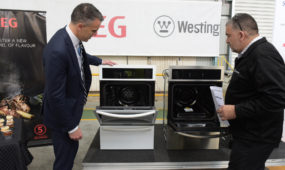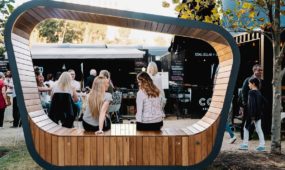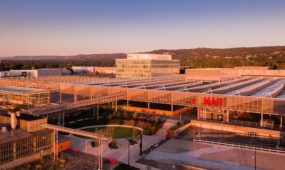Floating on Californian sunshine
Manufacturing
A LARGE scale floating solar panel array road tested in the South Australian Outback is set to soak up the Californian sunshine.

Sign up to receive notifications about new stories in this category.
Thank you for subscribing to story notifications.
HoltvilleInfratech
It will float on the surface and power a new water treatment plant to be used for the town’s drinking water supply and irrigation.
The system will also significantly reduce evaporation and decrease the reliance on chemicals such as chlorine to treat the water.
The floating system can shift on the surface in the instance of tremors and is purpose-built to withstand waves
Holtville
“Our decision to use Infratech’s floating solar system means we are not losing valuable farmland to massive solar farms; we can use three existing ponds and save our soil for increasing our capacity to produce crops,” he said.
“We’re in the desert, and we lose more than five feet of water a year to evaporation while typically only receiving around three inches of rain annually. Also, our main source of water, the Colorado River via the Hoover Dam, is currently in drought.
“Our residents use the water for drinking and irrigation, so this installation means the quality and taste of that water will improve while also ensuring we are on our way to meeting California’s renewable energy target of 50 per cent by 2030.”
Holtville is near the infamous San Andreas Fault so any energy infrastructure has to be able to withstand earthquakes and tremors.
The floating system can shift on the surface in the instance of tremors and is purpose-built to withstand waves. The system is expected to be fully installed and operational by mid-2016.
Infratech this year opened its first floating solar system at Jamestown in the mid-North of South Australia.
The 300kg Jamestown floating solar array is putting renewable energy back into the local grid and powering the council’s water treatment facility. It is the first of its kind in Australia.
The Infratech system claims to generate more than 50 per cent more energy than rooftop solar systems to deliver consumers a saving of up to 15 per cent on regular electricity prices.
The Californian project brings new technologies to enable production of renewable energy, waste processing and water management systems to a region with rising demands for reliable water supplies and affordable green energy supplies.
Infratech chief executive Dr Rajesh Nellore said Jamestown, like Holtville, was an arid area subject to harsh climates and drought.
“Jamestown and Holtville are proof points of what is possible when people look to sustainable infrastructure initiatives to power their communities,” Dr Nellore said.
“These projects also prove that Australian manufacturing has world-class expertise ready to be tapped for renewable energy, clean technology and other initiatives.”
Centre for NanoScale Science and Technology
Flinders University Centre for NanoScale Science and Technology Director Professor David Lewis said the collaboration with the Sydney-based company commenced via the NanoConnect program with funding from the South Australian Department of State Development.
NanoConnect is a collaborative research program which helps companies understand how new technology and materials can positively impact their business and products.
“This is an exciting working project which highlights the role of nanotechnology in old and emerging industries – and of the benefits of collaborations between these industries and the university sector,” Prof Lewis said.
“It's a demonstration of how knowledge in universities can be used to help companies create commercial outcomes and compete on the world stage.”
Jump to next article



